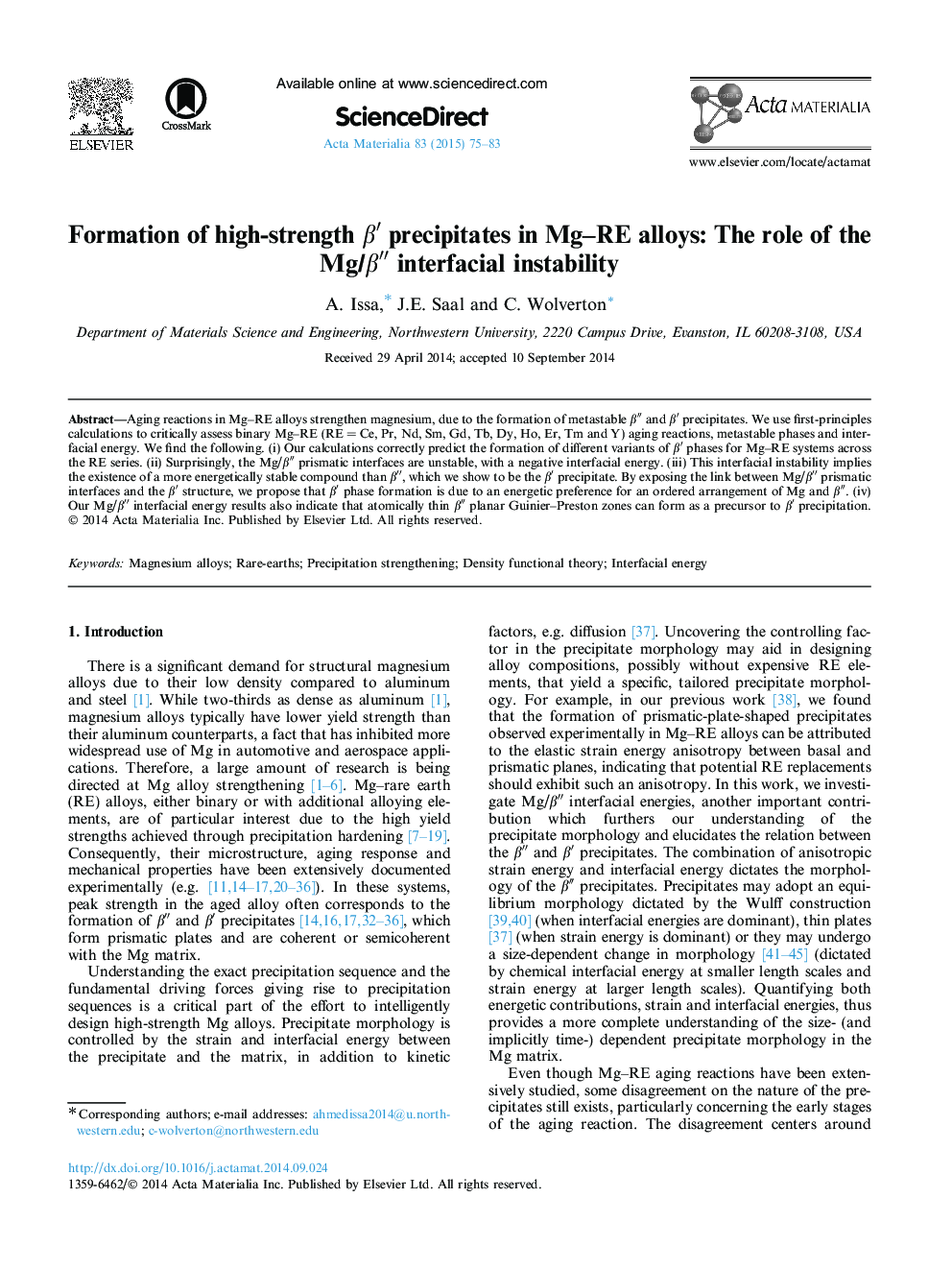| Article ID | Journal | Published Year | Pages | File Type |
|---|---|---|---|---|
| 7880891 | Acta Materialia | 2015 | 9 Pages |
Abstract
Aging reactions in Mg-RE alloys strengthen magnesium, due to the formation of metastable βⳠand βⲠprecipitates. We use first-principles calculations to critically assess binary Mg-RE (RE = Ce, Pr, Nd, Sm, Gd, Tb, Dy, Ho, Er, Tm and Y) aging reactions, metastable phases and interfacial energy. We find the following. (i) Our calculations correctly predict the formation of different variants of βⲠphases for Mg-RE systems across the RE series. (ii) Surprisingly, the Mg/βⳠprismatic interfaces are unstable, with a negative interfacial energy. (iii) This interfacial instability implies the existence of a more energetically stable compound than βâ³, which we show to be the βⲠprecipitate. By exposing the link between Mg/βⳠprismatic interfaces and the βⲠstructure, we propose that βⲠphase formation is due to an energetic preference for an ordered arrangement of Mg and βâ³. (iv) Our Mg/βⳠinterfacial energy results also indicate that atomically thin βⳠplanar Guinier-Preston zones can form as a precursor to βⲠprecipitation.
Keywords
Related Topics
Physical Sciences and Engineering
Materials Science
Ceramics and Composites
Authors
A. Issa, J.E. Saal, C. Wolverton,
